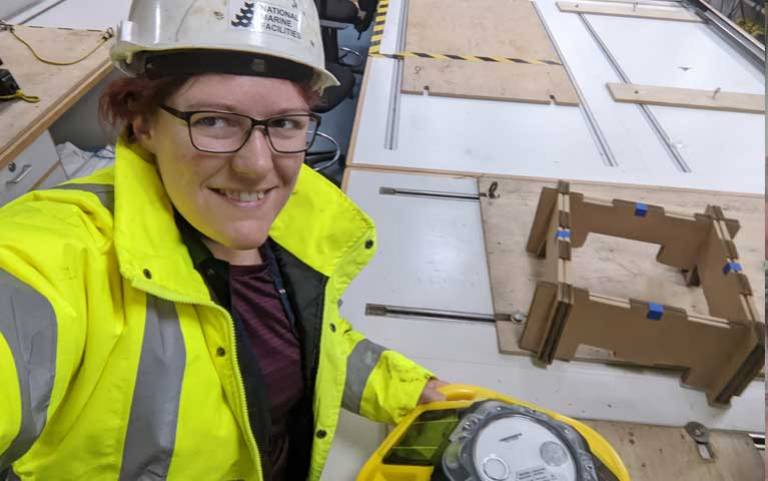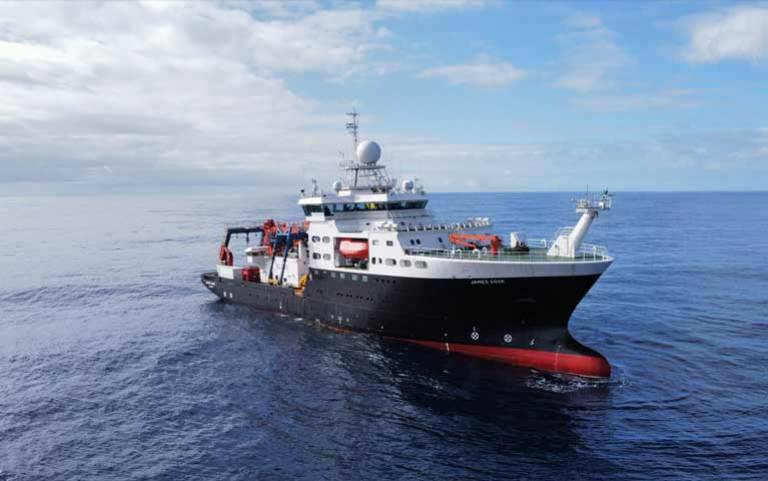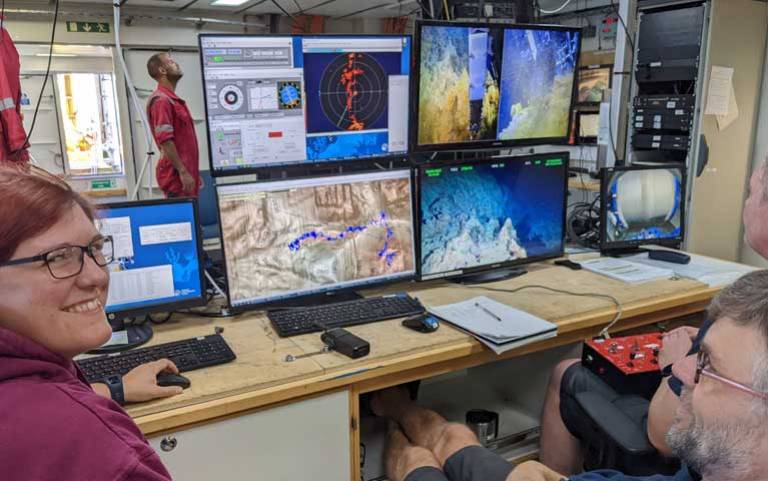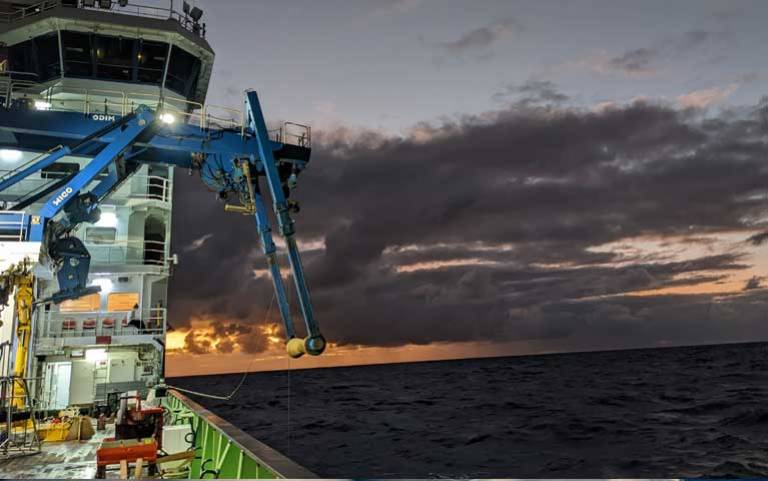Searching for metals for green technology at the bottom of the Atlantic Ocean.
28 June 2022
Project Ultra is investigating large metallic sulphide deposits formed in magnesium-rich, ultramafic mantle rocks exposed by huge smooth, flat-lying detachment faults at the Mid-Atlantic Ridge in water depths of ~3 km. Dr Katie McFall reports on their recent research cruise.

This spring I was part of an international team of scientists who voyaged to the Mid-Atlantic Ridge on the RRS James Cook as part of a NERC-funded project to explore ultra-mafic hosted seafloor mineralization. Seafloor mineral deposits known as seafloor massive sulphides are commonly found at mid-ocean ridges where hot water circulates through the basaltic oceanic crust, stripping metals from it before rising to the seafloor, precipitating metals and being discharged through vents and ‘black smoker’ chimneys. These deposits are usually rich in copper, zinc and lead, however our study site at 13°N is also rich in nickel, platinum, gold and cobalt. Cobalt is essential for electric car batteries and demand is predicted to outstrip supply in the near future, meaning we need to find new sources.

Caption: Drone photo of a couple of us relaxing on the front deck of the RRS James Cook on on our way to the study area (photo courtesy of Dr Andrew Martin).
The aim of this project is to understand why this deposit in particular is so cobalt rich, and therefore where we might find similar deposits both on land and at sea. One clue is that this area of the seafloor is not actually made of basaltic oceanic crust, but instead is a large slide-like fault plane known as an oceanic core complex, where tectonic movement has exposed mantle rocks on the seafloor. These mantle rocks are rich in cobalt and so we wanted to test the hypothesis that fluids circulating through these rocks were also cobalt rich.
“I will be analysing fluid inclusions, tiny trapped bubbles of ancient fluid, in these samples in our new lab here at UCL to see whether they might have been carrying cobalt, and to compare them to fluids coming out of seafloor vents on the site which will be sampled on a follow-up voyage next year.
Doing geology under 3 km of water is a challenge – here geological mapping, which would be simple on land, requires lots of planning and specialist equipment. We mapped the deposit and surrounding area using HyBIS, a remotely-operated underwater vehicle which made videos of the seafloor and took samples. We also used RD2, a robotic remote-controlled seafloor drill, to drill into the subsurface of the deposit and took samples of metal-rich seafloor sediment using a gravity corer. The drill core we recovered had some really unusual features which haven’t been seen in any other seafloor deposits previously and we built up a good understanding of the site, taking plenty of samples.

Caption: Geological mapping, but not as we know it! Here I am in the control room of of HyBIS, our remote underwater vehicle (RUV) with a couple of the RUV pilot team. We are mapping the Mid-Atlantic Ridge by using the live video footage of the seafloor 3 km below us (right hand screens) to make observations which I note on software linked to the map on the bottom left screen which shows the RUV’s position.
This was my first time on a research cruise, and it was a fantastic experience. The whole crew were amazing, pulling together in tough conditions 1270 km from the nearest land to make sure we got the best possible science done. When we weren’t remote mapping or analysing samples we saw some stunning sunrises, enjoyed the tropical heat on deck and even played table football, with an added handicap from the ship motion.

Caption: Sunrise over the Mid-Atlantic Ridge – one of the advantages of working the night shift!
We also did science outreach, including live-teaching an Earth Resources lab for our undergraduates from the Mid-Atlantic Ridge – a first for UCL!
Links:
- Project Ultra investigates metallic sulphide deposits formed in magnesium-rich mantle rocks 3km deep at the Mid-Atlantic Ridge.
- Dr Katie McFall's academic profile
 Close
Close

